Welcome to the Wildlife Den at Moonlight Retreat
Step into the Wildlife Den at Moonlight Retreat—an inviting space that celebrates the rich natural heritage of Virginia. This cozy room features ethically sourced taxidermy, showcasing native animals you might encounter in and around Smithfield, including raccoons, squirrels, opossums, black rat snakes, bobcats, black bears, white-tailed deer, and a variety of ducks and pheasants. Thoughtfully curated to inspire curiosity and connection with the local ecosystem, the Wildlife Den offers guests a unique glimpse into the beauty and diversity of Virginia’s wildlife—all from the comfort of Moonlight Retreat.
Curious to See These Creatures in the Wild?
Explore our Certified Wildlife Habitat page to watch real footage captured by our neighbors’ trail cameras. From playful raccoons to graceful deer, these candid videos offer a firsthand look at the animals that call this area home—bringing the natural world of Moonlight Retreat to life beyond the Wildlife Den.
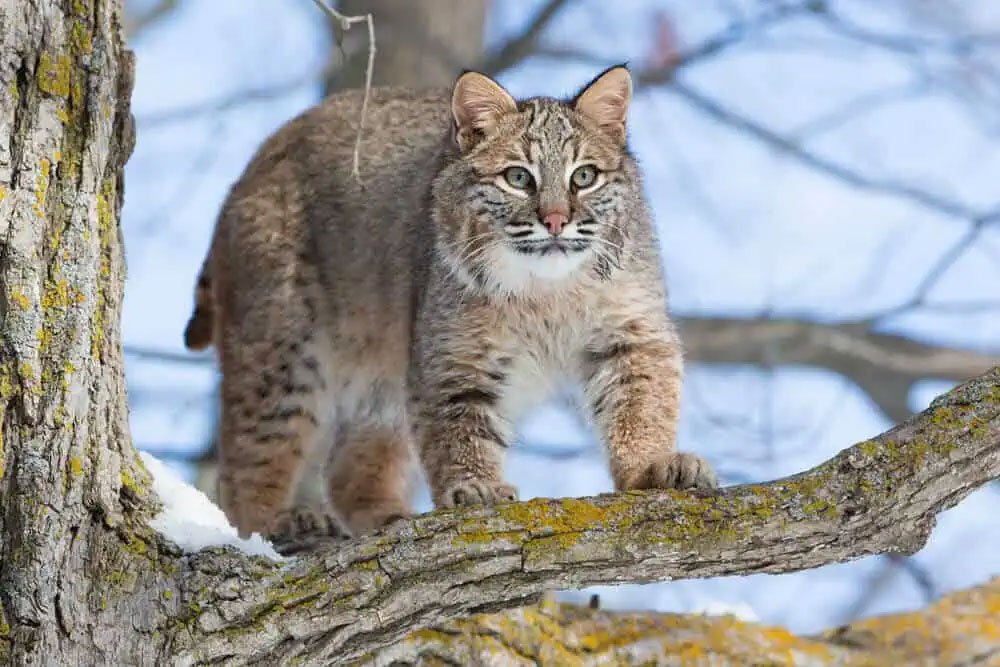
Bobcat
The bobcat, also known as the “red lynx,” is the most common wild cat in North America and belongs to the Lynx lineage, which includes the Canada lynx, Eurasian lynx, and Iberian lynx. Its name comes from its distinctively bobbed (short) tail, and it is the smallest of the four living lynx species. The bobcat’s origins trace back to the Eurasian lynx, which is believed to have crossed into North America from Asia via the Bering Land Bridge around 2.5 to 2.6 million years ago. Over time, as glaciers retreated, the bobcat expanded its range northward. Today, it is found across southern Canada, nearly all of the United States, and into parts of Mexico, with a population estimated between 700,000 and 1.5 million.
Physically, the bobcat is a striking animal with black stripes on its legs, black-tufted ears, yellow eyes, and a short black-tipped tail. Its coat varies from gray to red-brown, and its face appears wide due to long tufts of fur beneath its ears. Bobcats are solitary and territorial, using scent markings and claw marks to communicate. They are mostly active during dawn and dusk but can also be seen at night. Known for their agility, they can climb trees, swim when needed, and cover 4 to 8 feet in a single running stride. While primarily ground dwellers, they are skilled climbers and silent movers—though during mating season, they may vocalize loudly. Bobcats hunt a variety of prey including rabbits, rodents, deer, and even beavers, using stealth and pouncing to capture their food. Reproduction typically occurs in winter or early spring, with females giving birth to furred, spotted kittens in well-sheltered dens. In the wild, their average lifespan is around seven years where they are not hunted, though many live only about three years in areas with heavy hunting pressure. In captivity, they can live up to 18 years. While bobcats are protected in the countries where they live, they still face threats from habitat loss, automobile accidents, disease, and illegal hunting. After being overhunted in some regions—such as New Jersey, where they disappeared by the 1970s—reintroduction programs have helped restore bobcat populations in parts of the U.S., including Iowa and Georgia’s Cumberland Island.
Read More Information:
https://bigcatswildcats.com/bobcat/
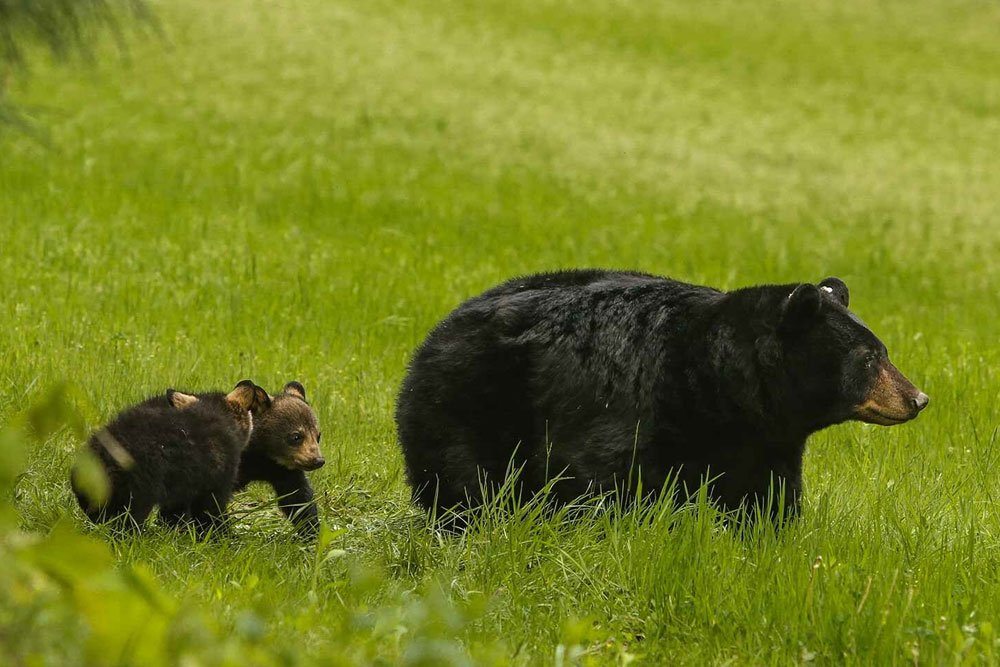
Black Bear
Of the three bear species found in North America—black, brown, and polar bears—the black bear is the only one that lives in Virginia. Though they’re shy and elusive by nature, black bears are present throughout most of the state, and sightings are becoming more common as human development expands into their habitat. For many Virginians, catching a glimpse of a black bear remains a rare and exciting experience. With a basic understanding of bear behavior and a few simple precautions, peaceful coexistence with these iconic mammals is very achievable.
Black bears are incredibly adaptable and occupy a wider range of habitats than any other bear species in the world. In Virginia, they’re commonly found along the Appalachian Mountains, throughout the Piedmont region, and occasionally along the coastal plain. They prefer areas with ample cover—such as dense oak forests or swampy woodlands—and need a variety of habitat types that provide food, water, shelter, and denning spots. Although black bears are often thought of as creatures of mature forests, they thrive in diverse environments.
Adult black bears typically measure between 4 and 7 feet from nose to tail and stand 2 to 3 feet tall at the shoulder. Males are significantly larger than females, with males usually weighing between 130 and 500 pounds, while females range from 90 to 250 pounds depending on the season. The largest wild black bear on record weighed 880 pounds and came from North Carolina; the heaviest known female, at 520 pounds, was found in northeastern Minnesota. In Virginia, most black bears are a deep black color, unlike their western counterparts which can appear reddish, brown, or even blond. They have a brown muzzle, sometimes marked by a white chest blaze, and are characterized by small eyes, rounded ears, long snouts, non-retractable claws, and a dense coat of shaggy fur.
Black bears are solitary by nature and tend to avoid human interaction when possible. They are most active at dawn and dusk and spend much of their time foraging for food. Opportunistic eaters, their diet changes with the seasons and includes berries, nuts, insects, small mammals, carrion, and even the occasional crop or garbage if human food sources are accessible. This adaptability makes them successful survivors, but also increases the chances of human-bear conflicts. Black bears typically den in hollow trees, rock outcrops, or dense thickets during winter months. While they do not hibernate in the true sense, their metabolism slows significantly. Once heavily hunted and threatened by habitat loss, black bears in Virginia have made a strong recovery due to conservation efforts and increased public awareness. Today, they remain a protected species, reminding us of the importance of maintaining healthy, connected habitats where wildlife can continue to thrive.
Read More Information:
https://dwr.virginia.gov/wildlife/information/black-bear/
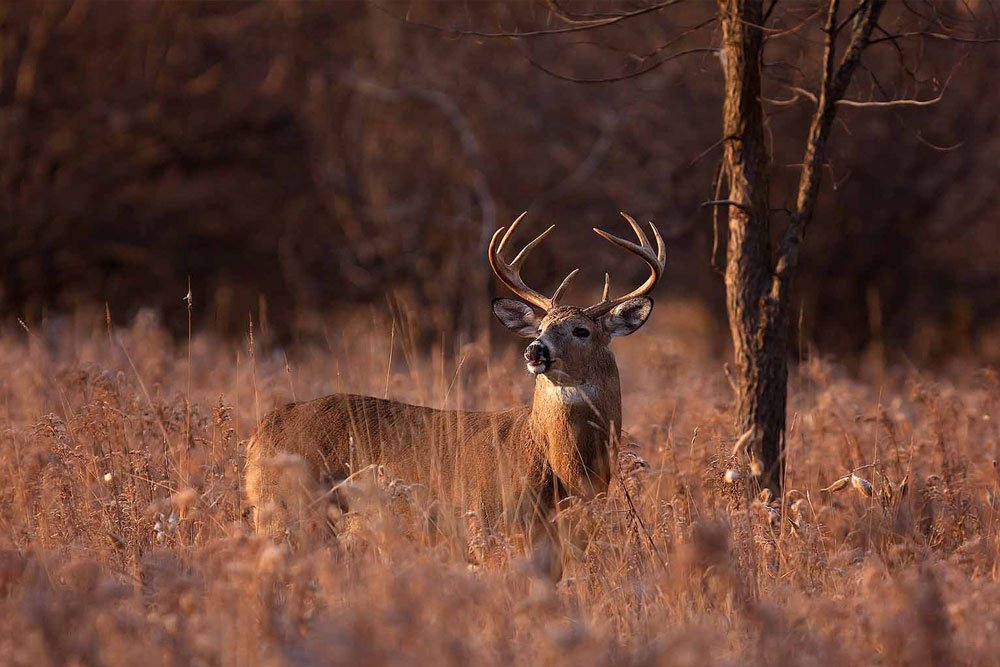
White-Tailed Deer
The white-tailed deer is one of the most recognizable and widespread mammals in Virginia, known for its graceful build and seasonal changes in coloration. Adults typically stand 90 to 105 centimeters at the shoulder and measure between 134 and 206 centimeters in length. Males (bucks) generally weigh between 90 and 135 kilograms, while females (does) range from 67 to 112 kilograms. Their coats change with the seasons—tan or reddish-brown in the summer and a more muted grayish-brown in the winter. They have white undersides and throats, with tails that are brown above and bright white below, which they flash as a warning signal when startled. Bucks are easily identified by their antlers, which have a forward-arching main beam with several unbranched tines. Fawns, born in late spring or early summer, are reddish-brown with distinct white spots that help camouflage them in dappled forest light.
White-tailed deer are crepuscular, meaning they are most active during the early morning and late evening hours when light levels are low. From February through August, bucks often travel in small bachelor groups, but as the breeding season—or rut—approaches in late fall, they become increasingly solitary. The peak of breeding occurs during the last two weeks of November, although mating activity may extend from late September through February. During the rut, bucks with hardened antlers challenge one another for dominance and the opportunity to mate, often gathering small harems of does. Females usually give birth to one to three fawns per year. In the wild, deer face a range of threats, including collisions with vehicles, hunting, poaching, and entanglement in fencing. While natural predation is relatively low in adult deer, fawns may fall prey to bobcats, and harassment from domestic dogs can also lead to stress or injury. Despite these dangers, white-tailed deer populations in Virginia remain strong and stable, thriving in both rural woodlands and suburban areas alike.
Read More Information:
https://dwr.virginia.gov/wildlife/information/white-tailed-deer/
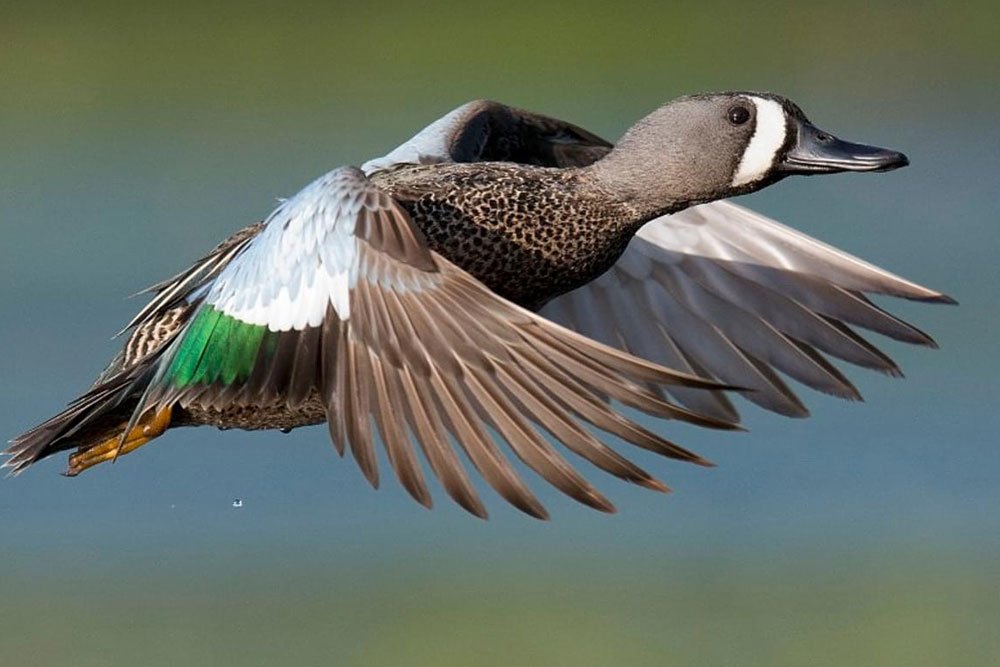
Blue Winged-Teal Duck
The Blue-winged Teal is one of North America’s most abundant duck species, second only to the Mallard. These small, agile ducks are easily recognized during the breeding season—males display a striking white crescent in front of each eye and pale blue wing patches, which are most visible in flight. Females are mottled brown with subtle markings and a faint eye stripe. Both sexes have a relatively slender build and swift, erratic flight patterns that help them evade predators. Blue-winged Teal prefer shallow wetlands, ponds, and marshy fields for breeding, especially in the prairie pothole region stretching across the northern U.S. and southern Canada. They’re ground nesters, often choosing grassy or lightly vegetated uplands near water to raise their broods.
Blue-winged Teal are among the earliest waterfowl to migrate, often heading south by late summer—well before most other duck species begin their journey. They winter along the southern U.S. coast, Central America, and into South America, where warm wetlands provide the food and shelter they need. These ducks feed on seeds, aquatic vegetation, and invertebrates, dabbling at the surface rather than diving. Despite facing threats like wetland loss, pesticide exposure (especially in areas where banned chemicals like DDT are still used), and ingestion of lead shot, their populations have remained relatively stable. Conservation programs like the USDA’s Conservation Reserve Program have historically supported their habitat by protecting millions of acres of grassland, though a recent decline in participation has reduced suitable nesting grounds. Between 830,000 and 1.4 million Blue-winged Teal are harvested by hunters each year—a number managed carefully to support long-term population goals. Agile in the air and quick to migrate, these ducks are both a favorite among birdwatchers and a vital part of wetland ecosystems across the continent.
Read More Information:
https://www.allaboutbirds.org/guide/Blue-winged_Teal/overview
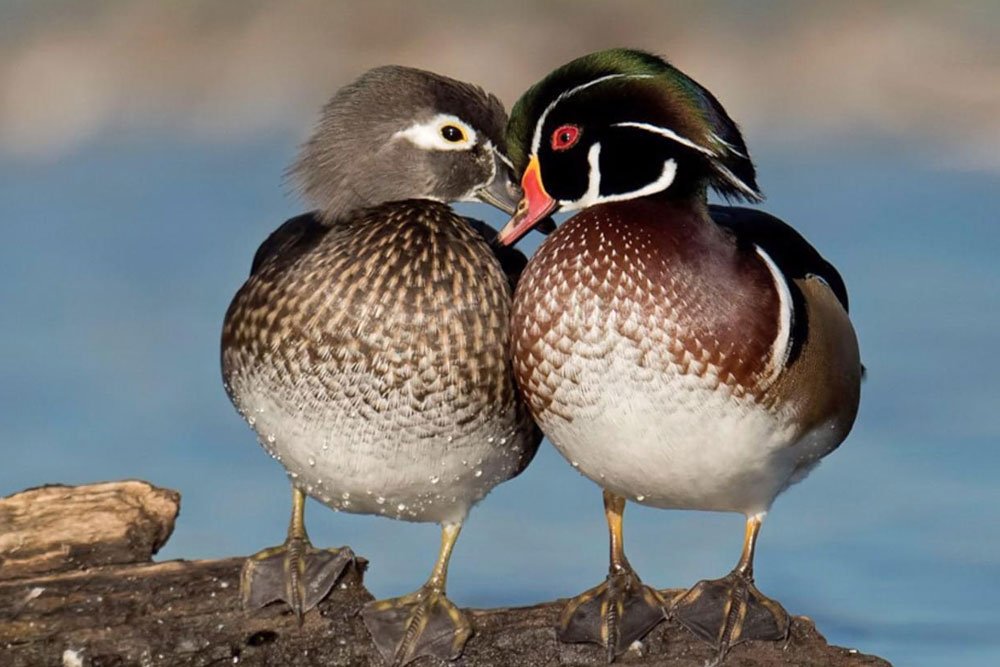
Wood Duck
The Wood Duck is one of the most colorful and distinctive waterfowl species in North America, easily recognized by its iridescent plumage, elegant crested head, and striking red eyes. Males are especially vibrant, with a glossy green head, white facial stripes, and chestnut-colored breast, while females are more subtly marked with a white eye-ring and a soft gray-brown body. Unlike many duck species, Wood Ducks nest in tree cavities, often near wooded wetlands, swamps, or slow-moving streams. Because of this, they are one of the few North American ducks commonly seen perching on branches or flying through forested areas with agility.
Once in steep decline due to overhunting and loss of nesting habitat, Wood Duck populations have made a significant recovery over the last century. Today, they are found year-round throughout much of the United States, and their numbers steadily increased between 1966 and 2019, according to the North American Breeding Bird Survey. Partners in Flight estimates their global breeding population at 4.6 million and classifies them as a species of low conservation concern. Despite their recovery, Wood Ducks remain the second most frequently harvested duck species in the country, behind only the Mallard. As cavity-nesters, they rely on the availability of large, dead trees for nesting—resources that are often scarce due to logging and development. Fortunately, the widespread installation of predator-resistant nest boxes near water has played a key role in supporting their continued population growth. Their unique nesting habits, stunning appearance, and adaptability make them a favorite among birdwatchers and an important part of wetland ecosystems.
Read More Information:
https://www.allaboutbirds.org/guide/wood_duck
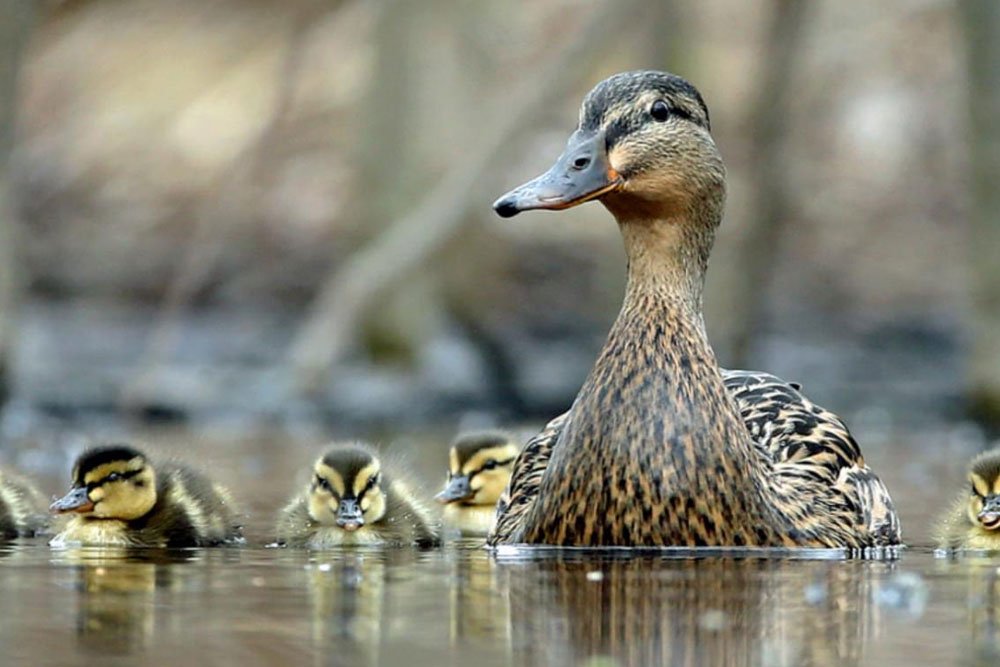
Mallard Duck
The Mallard is one of the most familiar and widespread duck species in North America, easily recognized by the male’s glossy green head, bright yellow bill, and curled black tail feathers. Females are mottled brown with an orange bill and both sexes feature a distinctive blue patch, or speculum, on their wings. Mallards are highly adaptable and thrive in a wide variety of wetland habitats—from rural marshes and farm ponds to urban parks and city lakes—making them one of the most successful waterfowl species on the continent.
Mallards are generalist foragers and feed by dabbling, tipping forward in the water to reach seeds, aquatic vegetation, and small invertebrates. They do not dive, but will also forage along shorelines, walking on land in search of food. During the breeding season, their diet consists mostly of animal matter such as aquatic insect larvae, earthworms, snails, and freshwater shrimp. As they migrate, many shift to feeding on agricultural grains and seeds found in harvested fields. In urban settings, Mallards are known to approach people and readily accept handouts, contributing to their reputation as one of the most people-tolerant wild duck species. Their adaptability, varied diet, and widespread presence make them an important part of both natural and human-altered ecosystems across North America.
Read More Information:
https://www.allaboutbirds.org/guide/mallard
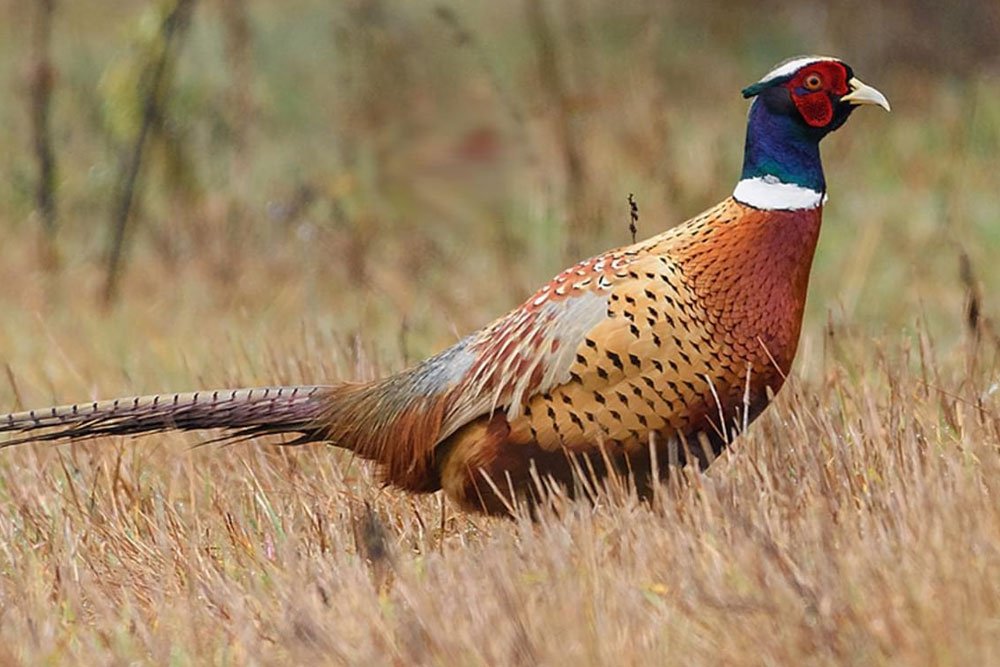
Ring-Necked Pheasant
The Ring-necked Pheasant is a striking and well-known upland bird often seen striding through open fields, grassy edges, and weedy roadsides across the United States and southern Canada. Introduced from Asia in the 1880s, pheasants quickly adapted to North American landscapes and became one of the continent’s most popular and widely hunted game birds. Males are especially eye-catching, with iridescent copper and gold plumage, a vivid red face patch, and a distinctive white collar encircling the neck. Their rooster-like crowing, often heard in spring, can carry for nearly a mile.
In contrast, females are more subtly colored in mottled brown tones, allowing them to blend seamlessly into tall grasses and agricultural fields—especially important when nesting and raising young. Pheasants prefer a mix of farmland, brushy cover, and open ground, where they forage for seeds, insects, and plant material. They are often spotted walking along roadsides or flushing suddenly into flight with a burst of rapid wingbeats. Despite being a non-native species, the Ring-necked Pheasant has become a familiar and iconic presence across many rural parts of North America, adding vibrant color and sound to the countryside.
Read More Information:
https://www.allaboutbirds.org/guide/Ring-necked_Pheasant/
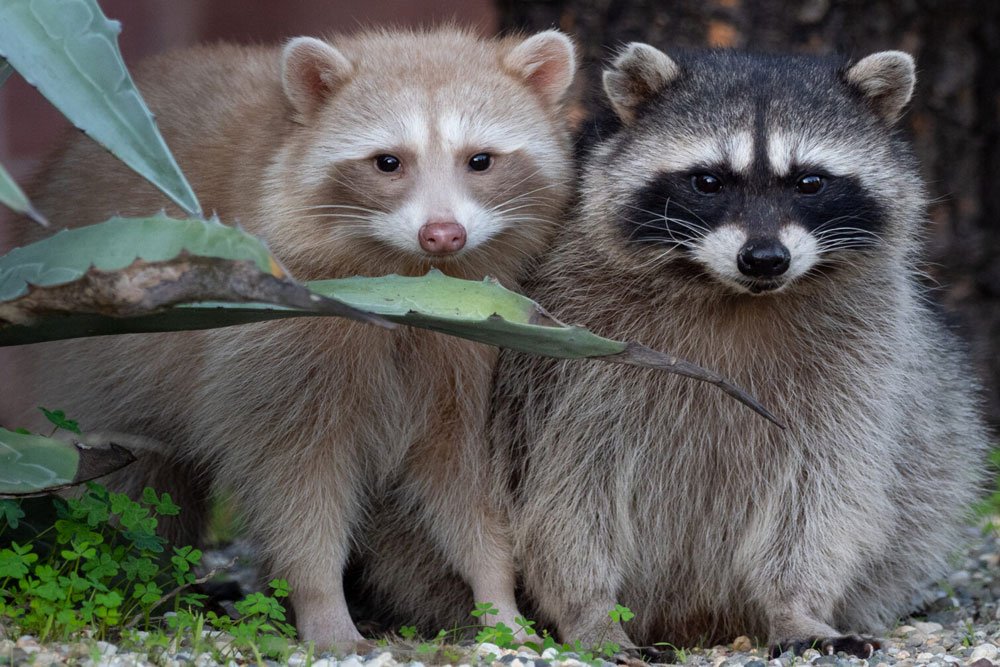
Racoon
The Northern Raccoon is a highly intelligent and adaptable animal, recognized for its distinctive black “mask” of fur around the eyes and its dexterous, human-like paws. These nocturnal creatures play an important role in the ecosystem by helping to control populations of insects and rodents. They are also scavengers, consuming carrion and cleaning up the environment. As they feed on fruits, berries, and seeds, raccoons help disperse plant seeds, which supports plant growth and regeneration in their habitats.
Raccoons are often found in suburban and rural areas, where they forage through backyards and forests. Their curious and playful nature makes them a favorite among wildlife enthusiasts, as they are often seen rummaging through compost bins or exploring at night. With only three raccoon species in the world, the United States is home to one of these fascinating animals. Look for them after dark, when they are most active and can be observed foraging and interacting with their environment.
Read More Information:
https://www.welcomewildlife.com/northern-raccoon/
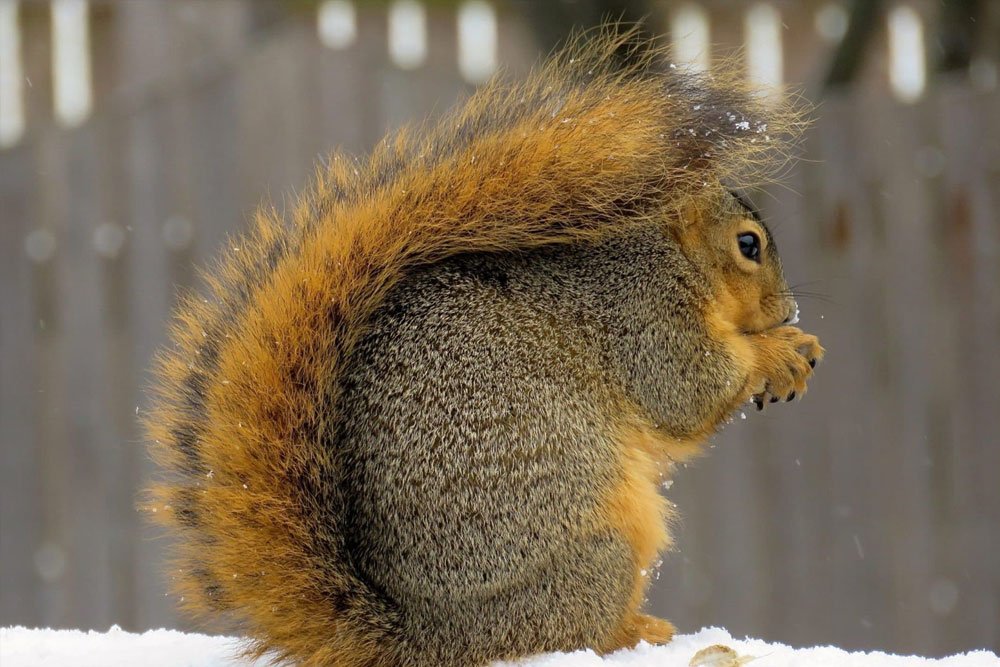
Fox & Gray Squirrels
Squirrels have a long evolutionary history, with fossils dating back to the Eocene Epoch, 47 to 33 million years ago, when forests blanketed the Earth. Today, North America is home to a variety of squirrel species, including the Fox Squirrel, the largest tree squirrel on the continent. Measuring 18 to 29 inches long, with a tail length of 8 to 13 inches, Fox Squirrels weigh between 1.1 and 2.2 pounds. These squirrels exhibit a wide range of colors, typically brown-gray to brown-yellow, with a brownish-orange underside, though some populations feature striking variations such as all-white squirrels (not albino) found in Marysville, Kansas. Fox Squirrels shed their fur twice a year, once in summer and again in fall, to adapt to changing temperatures.
In contrast, the smaller Gray Squirrel, measuring 9.1 to 11.8 inches in body length with a tail of 7.5 to 9.8 inches, weighs around 14 to 21 ounces. Their coats are predominantly gray, though some individuals may have a brownish tinge or lighter-colored tails. These squirrels are also known for their seasonal fur shedding, occurring in spring and fall. Gray Squirrels have a whitish belly, and in winter, their ears may turn white. Like their larger relatives, some populations of Gray Squirrels also display unique color variations, including all-white squirrels in Brevard, North Carolina, and all-black populations in the Midwest and Northeast.
Read More Information:
https://www.welcomewildlife.com/all-about-fox-squirrels-and-gray-squirrels/
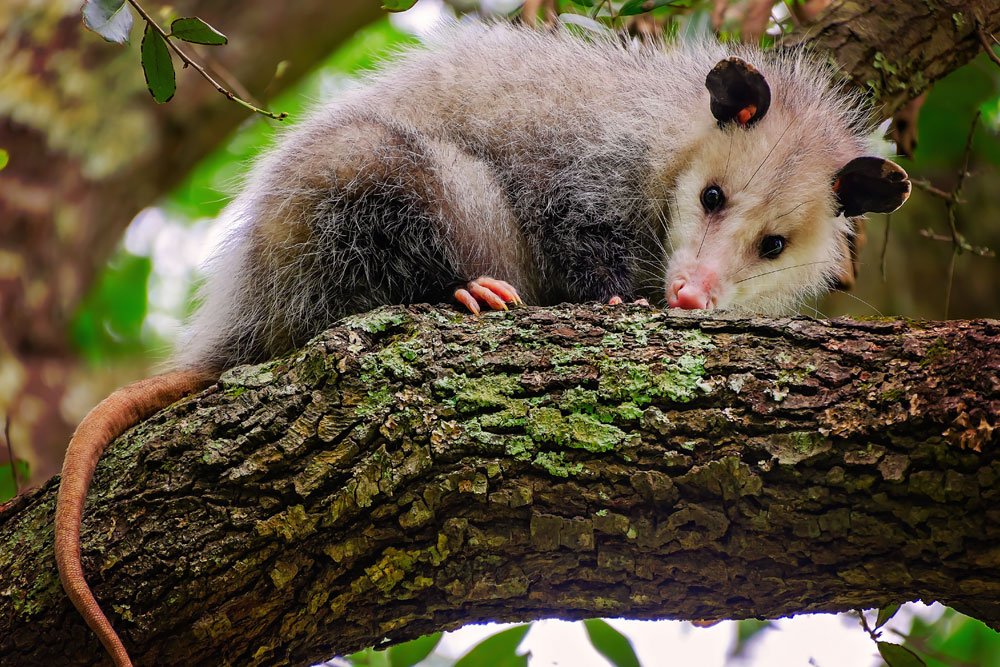
Opossum
Opossums are fascinating creatures, known for their unique defense mechanism of “playing dead.” When threatened by a predator, an opossum may collapse into a comatose state, a fear-induced reaction that makes it appear lifeless. This dramatic response, which can last anywhere from a few minutes to several hours, can sometimes trick predators into losing interest and moving on. Though often mistakenly thought of as “playing” dead, this behavior is actually an involuntary survival tactic.
Despite their reputation for being slow-moving and having a small brain—five times smaller than that of a raccoon—opossums are far more capable than many believe. Rescued opossums kept as pets are often reported to be affectionate, intelligent, and surprisingly trainable. Many owners say their opossums can be litter box trained, walk on a leash, and even greet them at the door when they return home. They can also learn to respond to their names, showcasing their intelligence and social nature.
While opossums are often feared for carrying diseases, the truth is quite different. They are actually the least likely of wild animals to carry rabies or other illnesses. Their lower body temperature makes it difficult for viruses to survive in their systems, offering them a natural defense. However, seeing an opossum out during the daytime may indicate that it is in distress—whether it’s fleeing a predator, displaced from its den, or a mother foraging to feed her young. Opossums don’t hibernate, so in winter, when food is scarce, they may also be forced to venture out during the day in search of sustenance.
Read More Information:
https://www.welcomewildlife.com/virginia-opossum-frequent-questions/
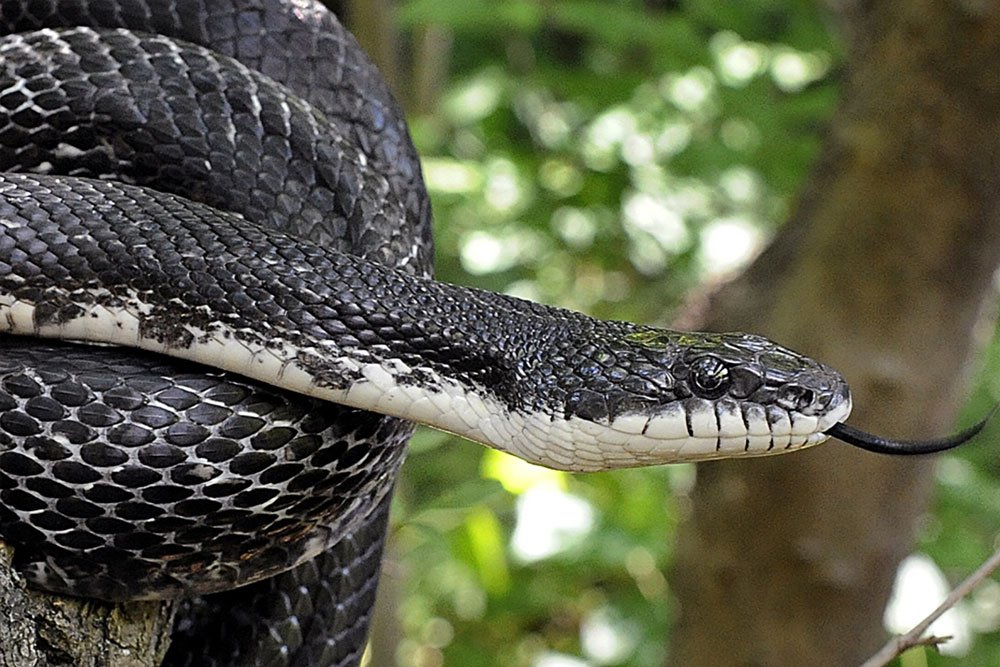
Black Rat Snake
The Black Rat Snake is a striking and large snake that can grow up to eight feet in length, although most adults are typically smaller. As its name suggests, the adult snake is primarily black, with a white or creamy yellow chin and throat. Unlike the black racer, which has a solid black belly, the rat snake has a belly that is a mix of light and dark scales, creating a mottled appearance. Light areas often appear between the scales, and its back scales are weakly keeled, adding to its distinctive texture.
Juvenile Black Rat Snakes are initially gray with light spots running down the center of their backs, and their eyes are white. As they mature, their coloring darkens, and by the time they reach about three feet in length, the juvenile pattern fades and becomes almost undetectable. These snakes are excellent climbers and are commonly found in wooded areas, fields, and around human structures, where they help control populations of rodents and other small mammals.
Snake Skin shown in Wildlife Den was taken out of a native Paw Paw Tree in Southwest Virginia
Read More Information:
https://virginiaherpetologicalsociety.com/reptiles/snakes/
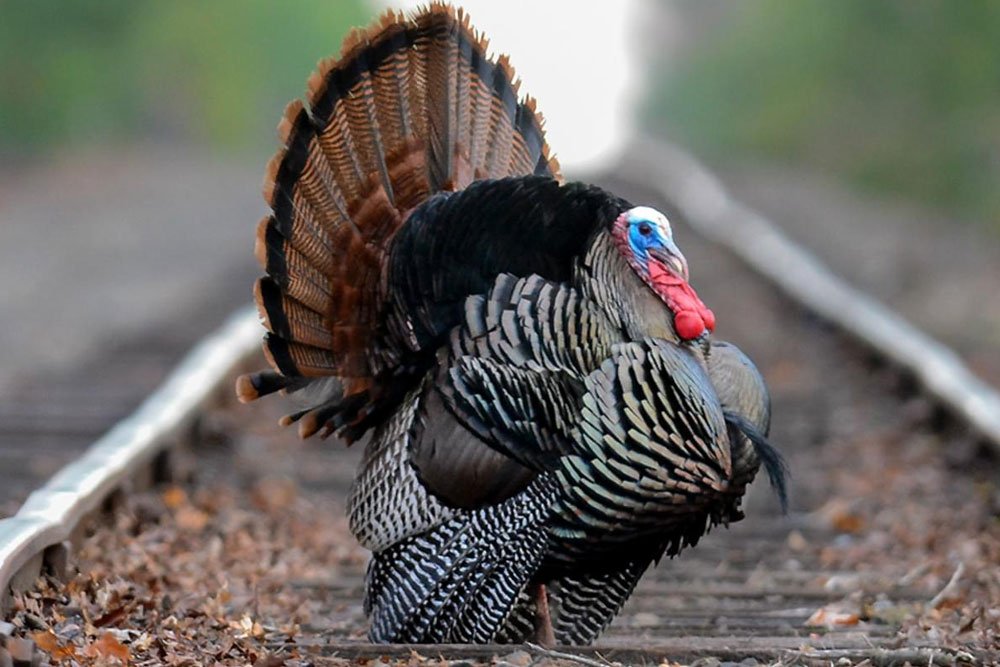
Wild Turkey
Wild Turkeys are frequent visitors at backyard feeders, where they can be seen scratching for seed, dust bathing, or resting along the woodline. Despite their size and presence, males play no role in raising young. After hatching, chicks follow the female, who feeds them for the first few days until they learn to forage independently. As they grow, broods often join together with other hens and their young, forming social groups. In winter, these gatherings can grow to over 200 turkeys.
The name “turkey” may have originated from early trade routes, where birds passed through the country of Turkey before arriving in European markets—leading to a case of mistaken identity that stuck.
Read More Information:
https://www.allaboutbirds.org/guide/Wild_Turkey/
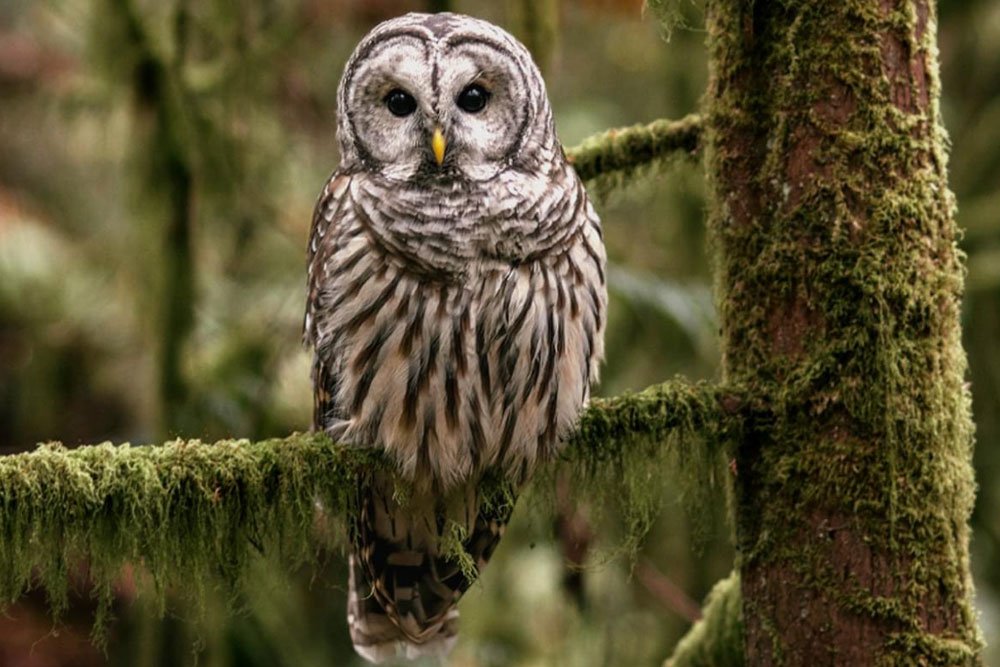
Barred Owl
The Barred Owl’s distinctive call—“Who cooks for you? Who cooks for you-all?”—echoes through mature forests and wooded swamps. These owls are year-round residents and rarely wander far from home. In fact, of 158 banded individuals later recovered, none had moved more than six miles.
Although Barred Owls often share habitat with Great Horned Owls, they tend to avoid direct conflict. If a Great Horned Owl is nearby, a Barred Owl will quietly retreat to another part of its territory to steer clear of trouble.
Read More Information:
https://www.allaboutbirds.org/guide/Barred_Owl/overview
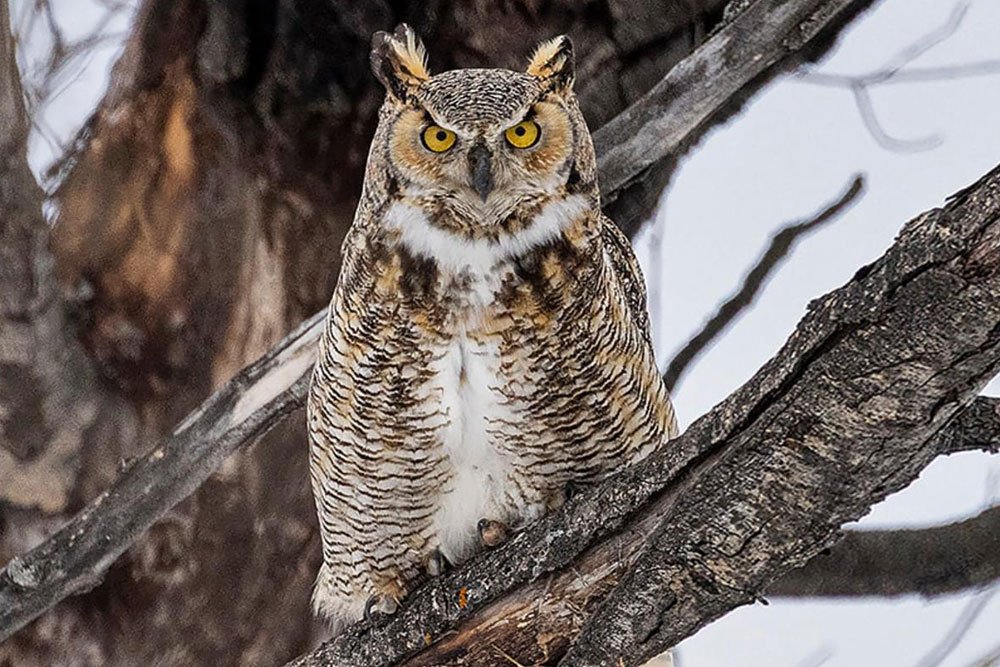
Great Horned Owl
With its towering ear tufts, piercing yellow eyes, and deep, resonant hoot, the Great Horned Owl is the classic image of a storybook owl. A powerful and fearless predator, it can take down a wide range of prey—from frogs and rodents to larger animals like Ospreys, falcons, and even other owls.
Its talons are incredibly strong; once clenched, it takes about 28 pounds of force to pry them open. This crushing grip allows the owl to swiftly immobilize large prey, often by severing the spine. Stealthy, silent, and striking, the Great Horned Owl is a top predator in its woodland domain.
Read More Information:
https://www.allaboutbirds.org/guide/great_horned_owl
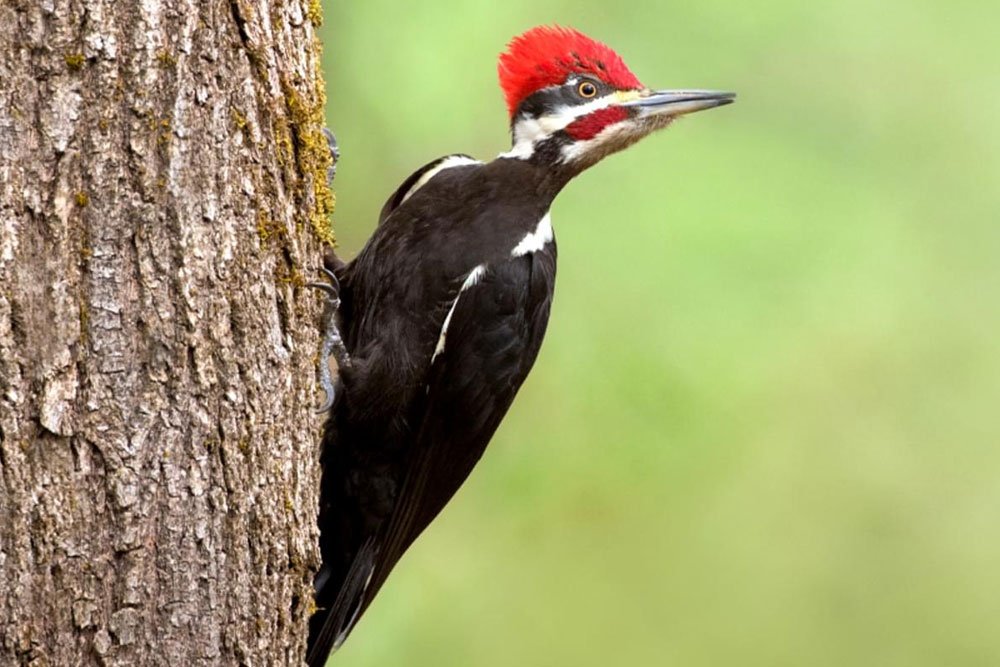
Pileated Woodpecker
The Pileated Woodpecker is one of North America’s most impressive forest birds. Comparable in size to a crow at roughly 16–19 inches long with a wingspan of 26–30 inches, it’s unmistakable thanks to its black body, bold white stripes along the neck, and vivid red crest. Males are further distinguished by a red “mustache” stripe extending toward the bill. They’re long-lived, often reaching 9 to 12 years in the wild.
These powerful birds use their stout, chisel-like bills to excavate large, rectangular feeding holes—sometimes more than a foot long—to reach carpenter ants, beetle larvae, termites, and other insects hidden deep within decaying wood. They’re also known to strip bark and forage on the ground, and sporadically feed on fruits and nuts. Their long, barbed, and sticky tongues help extract hidden prey.
Pileated Woodpeckers pair for life, tend to single broods of three to five eggs, and excavate deep nest cavities—typically 10 to 24 inches long and around 3.5 inches wide—in dead trees. Both parents share in incubating the 15–18 day clutch, and feed the altricial young until fledging at about four weeks old. The family may remain together through summer before young disperse in early fall.
Territorial and largely non-migratory, pairs defend extensive home ranges—sometimes over 1,000 acres—from rivals. They communicate and establish boundaries through resonant drumming on hollow trees and a variety of vocalizations such as “cuk, cuk, cuk” calls.
Ecologically, the Pileated Woodpecker plays a keystone role: its abandoned nest and roost cavities provide shelter and nesting sites for dozens of species, including other woodpeckers, owls, ducks, flying squirrels, bats, and even raccoons. Its feeding activity accelerates wood decay, contributing to nutrient cycling and structural diversity in forest ecosystems.
Read More Information:
https://www.allaboutbirds.org/guide/pileated_woodpecker
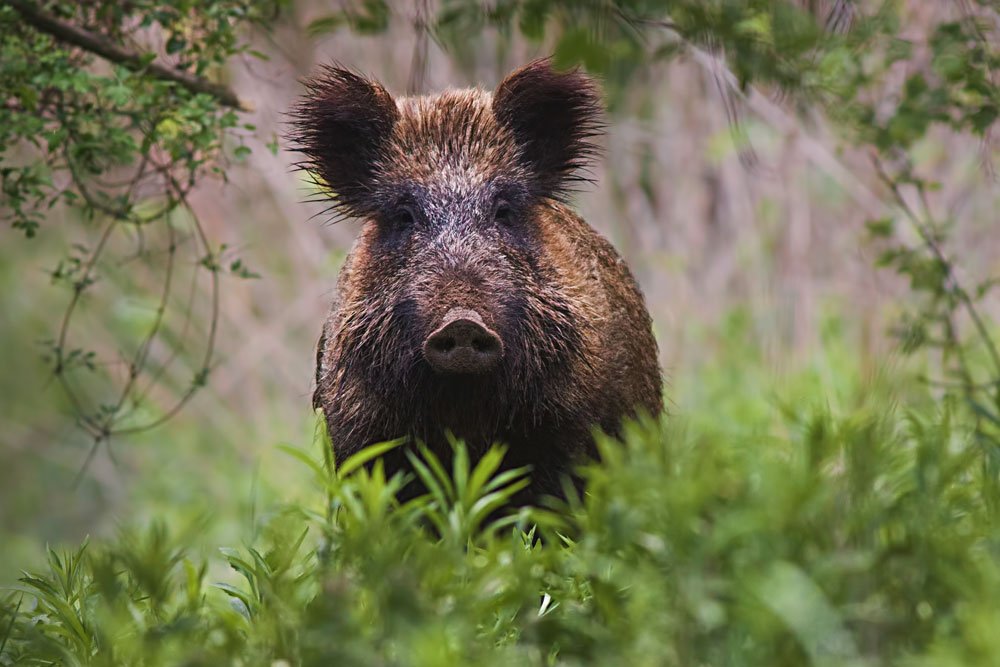
Wild Boar
Wild Boars—also known as feral hogs—are an invasive species increasingly seen across parts of Virginia, currently inhabiting at least 20 of the state’s 95 counties, including Fauquier and Culpeper. Classified broadly by the Virginia legislature as Sus scrofa, or “any swine that are wild or for which no proof of ownership can be made,” these animals can originate from domestic pigs that have gone loose and reverted to a wild state. According to the Virginia Department of Wildlife Resources, coat color and genetic origin make no difference—within just a few generations, formerly domesticated pigs can adapt to the wild and become fully feral.
Once established, wild boars are highly destructive to the environments they occupy. Their rooting and wallowing behaviors tear up native vegetation, disrupt soil structure, and damage habitats critical to a wide range of native species—including several that are threatened or endangered. With no natural predators in Virginia, their populations can grow rapidly, posing serious ecological and agricultural challenges. Currently, humans remain the only effective means of controlling their spread—an ironic twist, given that humans were the ones who introduced them to the landscape in the first place.
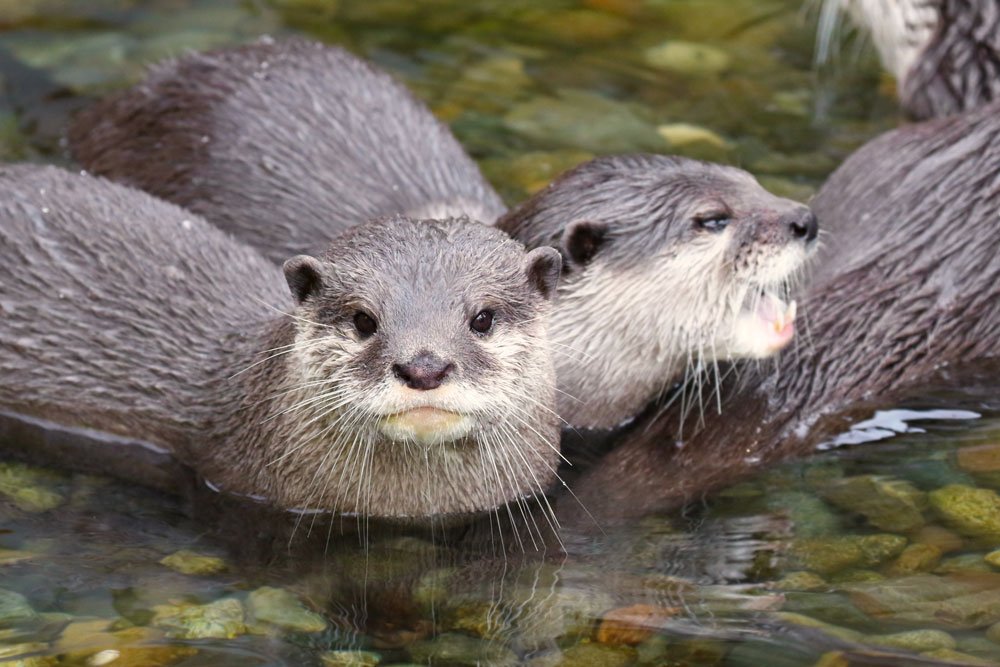
Otter
The River Otter (Lontra canadensis) is a sleek, semi-aquatic mammal found throughout Virginia’s rivers, streams, lakes, and wetlands. These charismatic animals are well-adapted for life in the water, with muscular, streamlined bodies, thick waterproof fur, webbed feet, and strong, tapered tails that help propel them gracefully through aquatic environments. Although capable of traveling long distances over land, River Otters are most at home in water, where they hunt, play, and raise their young.
Otters are typically found in food-rich areas, especially along the lower reaches of rivers and streams, in coastal marshes, and around forested wetlands. They favor habitats with clean water, abundant fish, and plenty of cover, such as logjams, drift piles, or overhanging tree roots. They also adapt to human-altered environments and have been known to den in abandoned duck blinds, culverts, and old boathouses. Highly intelligent and curious, River Otters are both solitary and social—while adults often travel alone, it’s common to see family groups consisting of a mother and her pups.
These animals are mostly crepuscular, meaning they are most active during dawn and dusk, although in undisturbed areas, they may be seen during the day. River Otters feed on a variety of aquatic prey, including fish, crayfish, frogs, and even small turtles. They are skilled hunters, using sensitive whiskers to detect movement underwater and sharp teeth to grasp slippery prey. Otters are known for their playful behavior—sliding down muddy banks, wrestling, and engaging in games with one another—a trait that serves both social bonding and skill-building in young pups.
Though once in decline due to habitat loss and unregulated trapping, River Otters have made a strong comeback in Virginia thanks to conservation efforts, habitat restoration, and legal protections. Today, they serve as an important indicator species for the health of aquatic ecosystems and are a welcome sight along the state’s waterways.
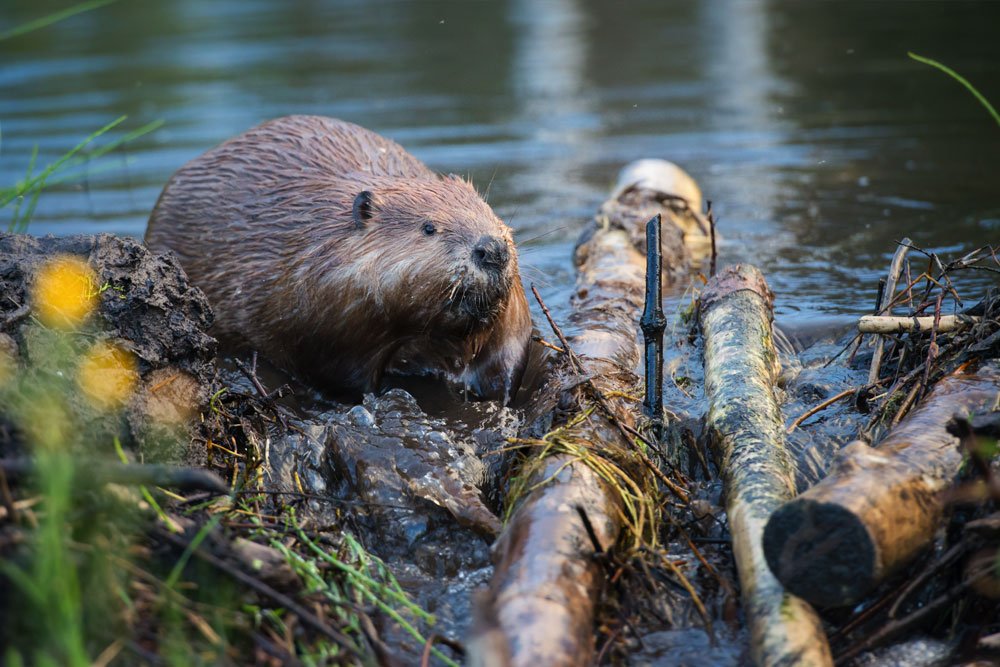
Beaver
The Beaver (Castor canadensis) is North America’s largest rodent and one of nature’s most remarkable engineers. Adults typically weigh between 40 and 50 pounds, though some individuals can reach up to 80 pounds. Measuring between 35 and 50 inches in length—including their broad, flat tail, which adds about 10 inches—beavers are powerfully built for a life spent in and around water.
Once nearly eliminated from much of their range due to the fur trade, beavers have rebounded and are now found throughout North America. In Virginia, they are believed to be present in every county. Beavers are most commonly found along streams, rivers, ponds, and wetlands where they build dams and lodges. These constructions not only provide shelter and protection from predators but also transform the landscape. By slowing water flow and creating wetlands, beaver activity benefits a wide array of other species—from amphibians and fish to waterfowl and songbirds.
Their dams create new ecosystems, improve water quality by trapping sediment, and help maintain stream flow during dry periods. Using strong front teeth to gnaw through trees, beavers collect branches and mud to build and reinforce their lodges and dams. Inside their lodges, which can be accessed only through underwater entrances, beavers stay warm and safe throughout the winter months.
Highly social animals, beavers live in family groups and communicate through vocalizations, scent marking, and the loud slap of their tails on the water to signal danger. As ecosystem engineers, their presence has a profound and lasting impact on the environment—shaping habitats that support biodiversity and enhance ecological resilience.
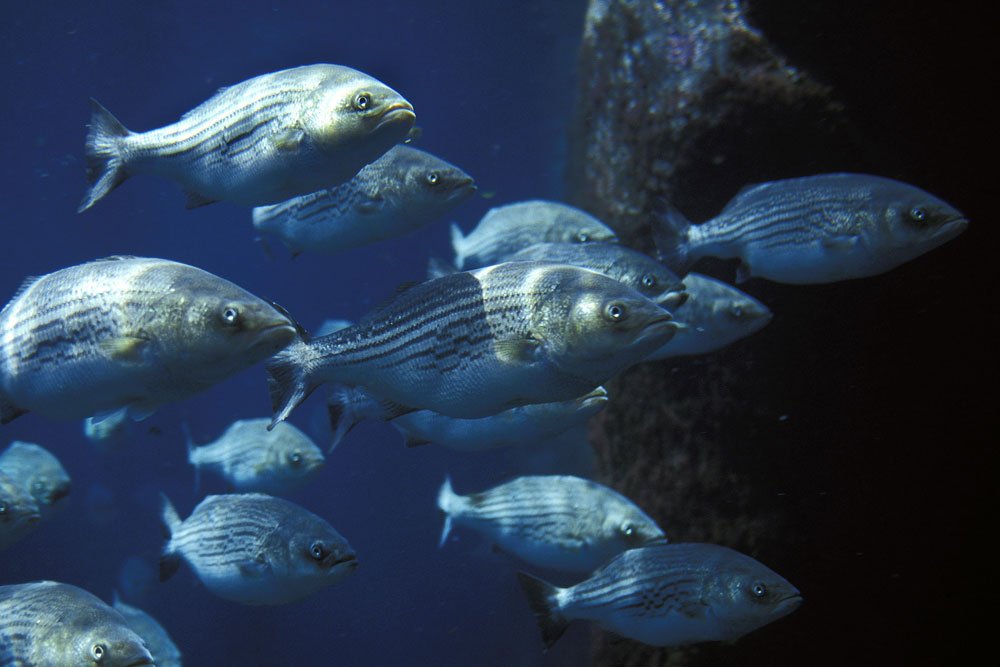
Striped Bass
Known by many names—striper, linesider, or rockfish—the Striped Bass (Morone saxatilis) is a powerful and iconic fish found along the Atlantic coast and in many freshwater rivers and reservoirs. These fish are easily recognized by their sleek, silvery bodies, which shade to olive-green along the back and feature seven or eight bold, unbroken horizontal stripes running along each side. Their streamlined shape and muscular build make them fast swimmers and formidable predators.
Striped Bass are highly adaptable and can thrive in both saltwater and freshwater environments. They are born in freshwater rivers but often migrate to coastal estuaries and the open ocean as adults, returning upstream to spawn—making them an anadromous species. In places like the Chesapeake Bay and Virginia’s river systems, stripers play a vital role in both the ecosystem and the recreational fishing industry. Prized for their fight and flavor, they are a favorite among anglers, yet their presence also reflects the health of aquatic environments.
